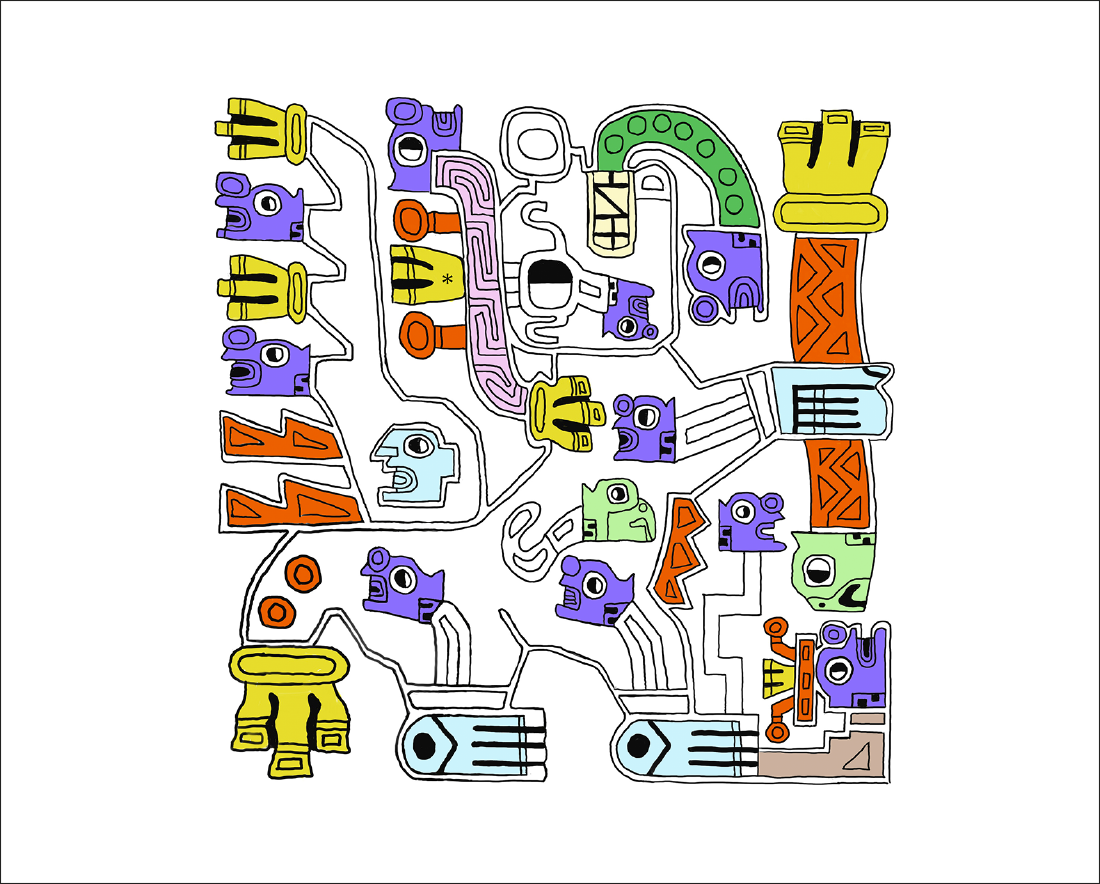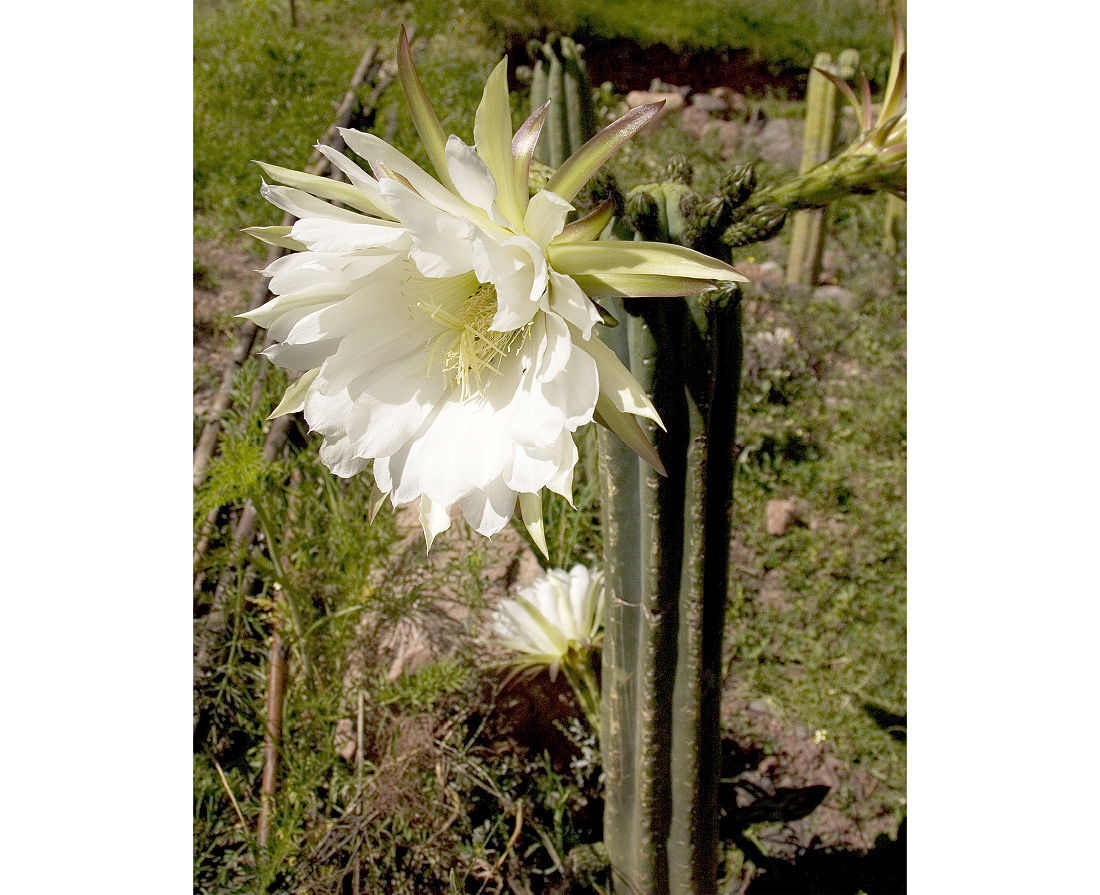Representations of the san Pedro (Trichocereus spp.) cactus flower and the Anadenanthera colubrina plant in Wari textiles and Tiwanaku art
Representaciones de la flor del cactus san Pedro (Trichocereus spp.) y la planta Anadenanthera colubrina en tejidos wari y el arte Tiwanaku
The san Pedro mescaline-rich cacti (Trichocereus spp.) and Anadenanthera colubrina (vilca in Kichwa) are entheogens (whatever brings one to the divine) prominent in Andean art. I discuss the cactus’s ten-inch-wide crowning flower and many of its motif variants in sixty-four Wari textiles. Artistic renderings correspond closely with the flower’s botanical parts: bud (containing the ovary/ovule/eggs) plus its central tipped vertical (style, stigma) flanked by stalks with tips (filaments, anthers). By revealing the interior components, the flower as it bursts into bloom is evoked. This motif is assigned to parts of the staff-bearer (renamed Transforming Being), including the eyepiece and vocalization and aural emanations. It conveys the multisensory trance experience of the Transforming Being catalyzed by ingesting san Pedro brew. The cactus imagery is consistently paired, even conflated, with vilca leaf and flower motifs, to which is added the jagged tree bark. The pairing of the two sacred plants proclaims specifically highland visionary power and suggests they were ritually consumed simultaneously, even mixed together.
Keywords: Trichocereus pachanoi, entheogen, Wari, Tiwanaku, Anadenanthera colubrina.
Altschul, S. 1964. A Taxonomic Study of the Genus Anadenanthera. Gray Herbarium of Harvard University 193: 3-65.
Bernier, H. 2009. Birds of the Andes. The Met, June. <https://www.metmuseum.org/toah/hd/bird/hd_bird.htm> [accessed: 03-20-2023].
Brooklyn Museum, n.d. Textile Fragment with Birthing Llamas. <https://www.brooklynmuseum.org/opencollection/objects/59389> [accessed: 04-14-2023].
Burger, R. 2011. What Kind of Hallucinogenic Snuff was Used at Chavín de Huántar? An Iconographic Identification. Ñawpa Pacha: Journal of Andean Archaeology 31 (2): 123-140.
Cactus Museum. n.d. Cactus Anatomy. <http://www.cactusmuseum.com/anatomy.asp> [accessed: 02-11-2022].














